In the ever-evolving world of IT Service Management (ITSM), choosing the right solution can define your organization. EasyVista vs. Microsoft System Center Service Manager (SCSM) is a comparison that demands careful consideration. Why? Because the ITSM platform you choose has the power to shape the quality of your IT services and the overall efficiency of your operations.
In this blog post, we’ll embark on an ITSM tools comparison through the capabilities and advantages of these two formidable contenders.
But amidst the competition between these prominent players, a compelling alternative emerges—InvGate Service Management. With its streamlined functionalities and innovative approach, this service desk software offers organizations a unique opportunity to elevate their IT operations to new heights of efficiency and effectiveness.

Table of contents
- TL;DR
- What is EasyVista?
- What is Microsoft System Center Service Manager?
- Considering InvGate Service Management as an ITSM solution alternative
TL;DR
- Microsoft System Center Service Manager offers seamless implementation, efficient inventory and Patch Management capabilities, as well as comprehensive Asset and Task Management features. However, users have concerns about its configuration intuitiveness and inconsistent customer support.
- While EasyVista's user-friendly interface and robust workflow editor impress users, concerns arise due to inconsistent support and platform complexity, resulting in time-consuming tasks.
- InvGate Service Management sets itself apart in the world of ITSM and ESM with its outstanding ticketing system, intuitive features, in-depth reporting, and unparalleled cost-effectiveness.
We tried to be as thorough as possible, but if you don't have enough time to read it through and through, here's (another) TL;DR: InvGate Service Management can do everything we say here, and you can test it right away for free for 30 days.
Most looked-at features by buyers
When evaluating options for IT Service Management solutions, users often focus on specific features that align with their organization's requirements. It's crucial to understand these desired functionalities to make well-informed decisions.
Now, let's explore the essential aspects that potential buyers typically take into account when comparing ITSM tools:
- ITIL compliance - Many organizations prioritize adhering to ITIL best practices. Therefore, buyers may prefer solutions that support ITIL processes, including Incident Management, Problem Management, Change Management, and Asset Management.
- Efficient IT Asset Management - Users prioritize software that offers robust IT Asset Management (ITAM) capabilities, aiding in maintaining accurate inventories and optimizing resource utilization within their organizations.
- Cost and support - Buyers assess the solution's cost-effectiveness, considering licensing models, subscription plans, and any additional expenses related to features or users. The availability of reliable customer support, comprehensive documentation, and accessible training resources significantly influences their decision-making.
- Support automation and Workflow Management - Buyers seek software solutions with automation capabilities to streamline routine tasks like ticket routing, approvals, and escalations. These automation features contribute to increased efficiency and productivity.
- Customization and adaptability - Buyers appreciate software solutions tailored to suit their business needs. This ensures that the software aligns with their unique workflows and processes, ultimately increasing user satisfaction and overall operational efficiency.
- User-friendly experience and interface - Ease of use and interface design are pivotal considerations for buyers. They highly value a user-friendly platform with an intuitive interface that boosts user adoption and productivity. Mobile accessibility is also crucial, especially for organizations with remote or mobile workforces.
- Ticket Management System - Prospective buyers place substantial importance on a comprehensive Ticket Management system integrated into the help desk software. This functionality facilitates efficient tracking, assignment, and resolution of customer inquiries and support requests.
- Self-service portal and knowledge base - Including a self-service portal is highly valuable, empowering end-users to independently resolve common issues and access relevant information without requiring direct assistance.
- Simplified IT service catalog - Organizations often require a streamlined IT service catalog that provides a centralized platform for users to request specific IT services or resources. This simplifies service requests, improves visibility, and aids in effectively managing service delivery.
- Informative reporting - Buyers look for help desk software with robust reporting tools like dashboards and reports. These features offer valuable IT operations and performance insights, facilitating informed decision-making and continuous service improvement.
- Scalability and customization - Organizations with evolving needs prioritize solutions that can adapt to their growth and allow customization. Buyers specifically seek the ability to create custom fields, workflows, and extensions/plugins to cater to their unique business demands.
- Seamless integration capabilities - The ability to integrate with other systems and applications is a critical requirement for buyers. They seek smooth data flow and automated processes, valuing the capability to integrate with existing tools and platforms to enhance efficiency and provide a unified user experience.
What is EasyVista?
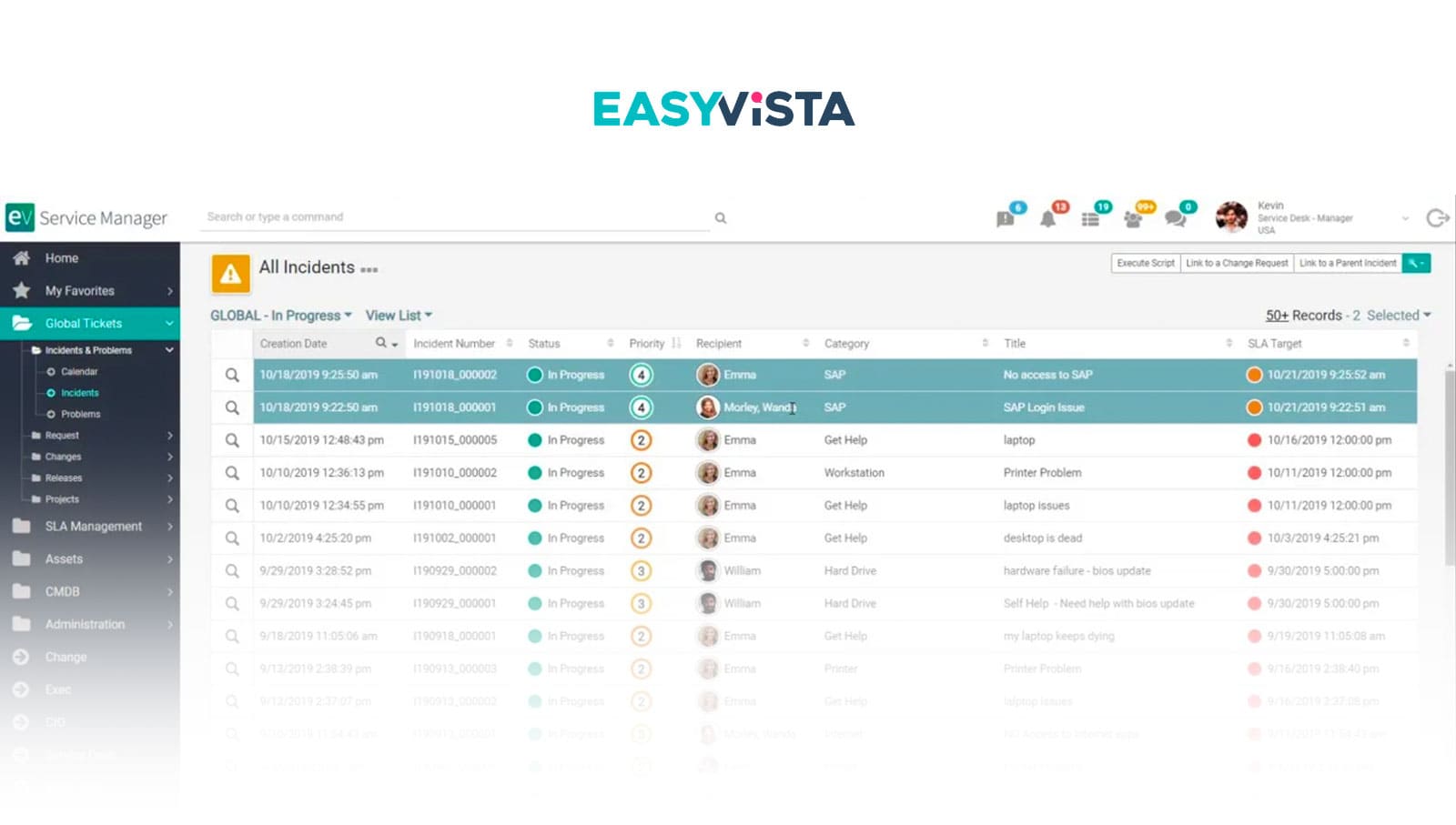
EasyVista is a cloud-based tool that makes IT Service Management tasks easier and better. It includes 11 ITIL PinkVerified processes to help organizations work more effectively and consistently.
The company, formerly known as Staff & Line Group, has been a key player in ITSM since it started in 1988. Its recognition in the 2022 Gartner Magic Quadrant™ for ITSM Tools highlights its significance and standing in the ITSM field.
What users like from EasyVista
EasyVista has received positive reviews from respected industry sources, including Gartner. To better understand what this platform can do, let's explore some of its key strengths, as highlighted in these evaluations.
- Comprehensive ITSM features - EasyVista offers a complete suite of IT Service Management features, including robust service catalog management. Users emphasize the platform's outstanding flexibility, particularly in automating business processes. It facilitates actions' centralization, traceability, and visibility, ultimately enhancing ITSM capabilities.
- User-friendly interface - EasyVista boasts a user-friendly interface catering to customers, IT staff, and administrators. Its incorporation of all ITIL modules further enhances its value. Users have noted that EasyVista simplifies service processes and enhances service quality, prioritizing user needs.
- Configuration and customization - EasyVista's codeless configuration simplifies the customization process. Users find that the platform's provided groups, roles, and domains streamline ticket assignment, improving efficiency. Regular updates, driven by customer feedback, ensure the platform remains up-to-date and responsive to evolving requirements.
- Enhanced efficiency - EasyVista stands out for its ability to streamline work processes. It supports agile services and consistently delivers high-quality outcomes. These efficiency-driven features contribute to overall productivity and performance improvement.
- Robust workflow editor - One of EasyVista's standout features is its workflow editor, which transforms documented processes into practical steps. Users appreciate its low-code options and extensive customization capabilities, making it a versatile tool for tailoring workflows to specific needs.
What users don’t like from EasyVista
Although EasyVista has several strengths and positive qualities, there have been concerns and negative user feedback regarding specific aspects of the platform. These findings come from reviews conducted by sources like Gartner. Here are some of the issues that have garnered attention:
- Complexity - Users have found that fully utilizing EasyVista's features requires a deep understanding and vision for the platform, which can be a barrier for some users. The application builder is perceived as not very user-friendly, especially for administrators who may find it challenging to navigate and use effectively.
- Usability and interface - Some users have noted that EasyVista requires too many clicks to perform routine tasks, resulting in time inefficiency. The platform has been criticized for its lack of user-friendliness, making it challenging to find specific features. Users have observed that the default back-office setup is complex and often needs customization to streamline the interface.
- Functionality and customization - Users have reported that configuring all functionalities as desired within EasyVista can be time-consuming. They have also expressed frustration with the limited options for customizing screen elements, which restrict their ability to adapt the platform to their specific needs. Additionally, slowness has been cited as an issue, particularly when dealing with a large number of users.
- Integration and modern technologies - EasyVista has faced criticism for not keeping pace with modern technologies and failing to meet expectations with its SaaS version and integration capabilities with other tools. Users often seek more advanced integration features and a smoother experience when working with external tools.
- Support and documentation - Concerns have been raised about inconsistent vendor support, which users view as a significant drawback. Additionally, users have noted that vendor documentation is both inadequate and outdated, hindering their ability to effectively use the platform. Furthermore, applying updates can be challenging due to a lack of robust vendor quality assurance and quality control (QA/QC) processes.
What’s EasyVista’s argument over Microsoft System Center Service Manager?
EasyVista presents a compelling argument against Microsoft System Center Service Manager, offering advantages:
- Comprehensive ITSM features - EasyVista offers robust ITSM features, including service catalog management.
- User-friendly interface - EasyVista's intuitive interface enhances service quality and user satisfaction.
- Simple configuration and customization - EasyVista's codeless approach and regular updates offer a user-friendly experience.
- Enhanced efficiency - EasyVista excels in efficiency and productivity, supporting agile services and streamlined processes.
- Powerful workflow editor - EasyVista's flexible workflow editor allows easy customization.
What is Microsoft System Center Service Manager?
Microsoft System Center Service Manager (SCSM) is an IT Service Management solution created to streamline and customize the best practices in ITSM. It is built on the principles of ITIL and the Microsoft Operational Framework (MOF). It provides various capabilities, such as Incident, Problem, Service Request, Change, and Release Management functions.
What users like from Microsoft System Center Service Manager
Microsoft System Center Service Manager has received positive user feedback from customers and industry experts like Gartner. To better understand the platform's capabilities, let's explore some of the key strengths highlighted in these reviews.
- Feature-rich solution - Microsoft System Center Service Manager's features empower IT teams to efficiently manage assets and tasks, equipping them with the necessary tools for effective IT Service Management and support.
- Seamless automation and integration - Many users have emphasized the software's exceptional integration capabilities with various tools and robust automation features. These capabilities streamline critical tasks, such as creating new user accounts and performing system updates.
- Effortless implementation - Many users find the platform quick and straightforward to implement. They appreciate the availability of well-structured online documentation that aids in setting up test environments.
- Comprehensive modules - Microsoft SCSM is highly praised for its thorough implementation of the ITIL Framework. Users value the inclusion of modules such as Incident Management, Service Request Management, Problem Management, Release Management, and Change Management, which enable organizations to align with industry best practices.
- Robust Asset and Task Management - Users have praised the software's robust Asset and Task Management features. These capabilities are pivotal in IT Management, providing IT professionals with efficiency gains and time-saving benefits.
- Inventory and Patch Management - Some users have acknowledged the software's strong Inventory and Patch Management tools while noting that there may be a learning curve involved.
What users don’t like from Microsoft System Center Service Manager
While Microsoft System Center Service Manager has several strengths and positive aspects, it is not without its share of user criticisms and concerns, as highlighted in various reviews, including those conducted by Gartner. Here are some notable issues that deserve attention:
- Expertise demands - Setting up and configuring Microsoft SCSM can be challenging, potentially necessitating extra resources for a smoother deployment. Moreover, it demands a high level of expertise and proficiency in PowerShell, which might pose a hurdle for organizations lacking specialized skills.
- Update risks - Some users have voiced apprehensions regarding updates for Microsoft SCSM, citing potential risks and the potential to disrupt operational workflows.
- Customization constraints - Users have observed that the customization options within the system are limited and can be overly intricate, posing challenges for organizations seeking tailored solutions.
- Integration expenses - Integrating non-Microsoft products with Microsoft System Center Service Manager may entail additional costs, which organizations should factor into their decision-making.
- Scalability issues - As the database size expands, some users have reported performance problems, with the platform experiencing slowdowns.
- Reporting shortcomings - Users have noted deficiencies in the platform's out-of-the-box reporting capabilities, suggesting that additional configurations or third-party tools may be necessary to meet reporting requirements effectively.
- Support inconsistencies - Variability in Microsoft's support quality has been a point of concern among users. Inconsistent support experiences can significantly impact users' overall satisfaction with the product.
What’s Microsoft System Center Service Manager’s argument over EasyVista?
In comparing Microsoft System Center Service Manager (SCSM) to EasyVista, several key advantages of SCSM become evident:
- Feature-rich solution - SCSM provides a comprehensive suite of ITSM features, covering a wide range of needs.
- Seamless automation and integration - SCSM's exceptional integration capabilities and robust automation streamline critical ITSM tasks effectively.
- Effortless implementation and scalability - SCSM offers a straightforward implementation process and scalability suitable for various organizational sizes.
- Comprehensive ITIL implementation - SCSM excels in its thorough implementation of the ITIL Framework, enabling organizations to integrate industry best practices into their IT Service Management seamlessly.
- Robust Asset and Task Management - SCSM's asset and task management features are highly praised for their efficiency gains.
Considering InvGate Service Management as an ITSM solution alternative
While EasyVista and Microsoft System Center Service Manager are well-known players in the ITSM industry, exploring alternative solutions that align with your organization's unique needs is essential. In this context, InvGate Service Management is a compelling option worthy of thorough consideration.
Let's delve into the extensive features of InvGate Service Management that establish it as a valuable choice for meeting your organization's ITSM requirements:
Exceptional user experience
InvGate Service Management places a strong emphasis on delivering an exceptional user experience through careful design and adherence to UI/UX best practices. Its intuitive interface promotes rapid adoption, minimizing the need for extensive training and maximizing productivity.
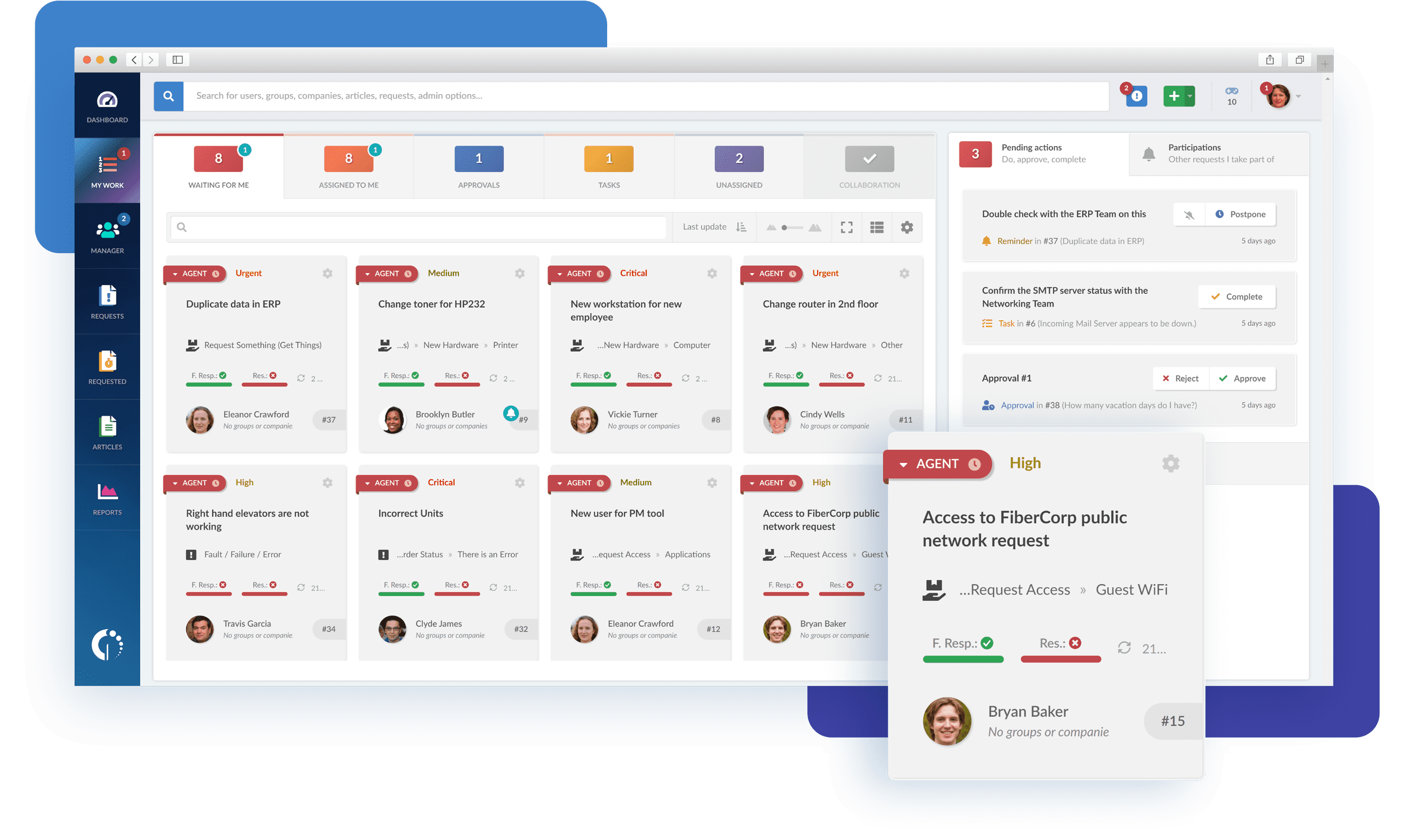
Robust Ticketing and Incident Management
InvGate Service Management offers powerful tools for efficient ticket tracking, collaboration, and incident resolution. Features like automated ticket routing, customizable workflows, and SLA Managementempower IT teams to manage and prioritize incidents effectively.
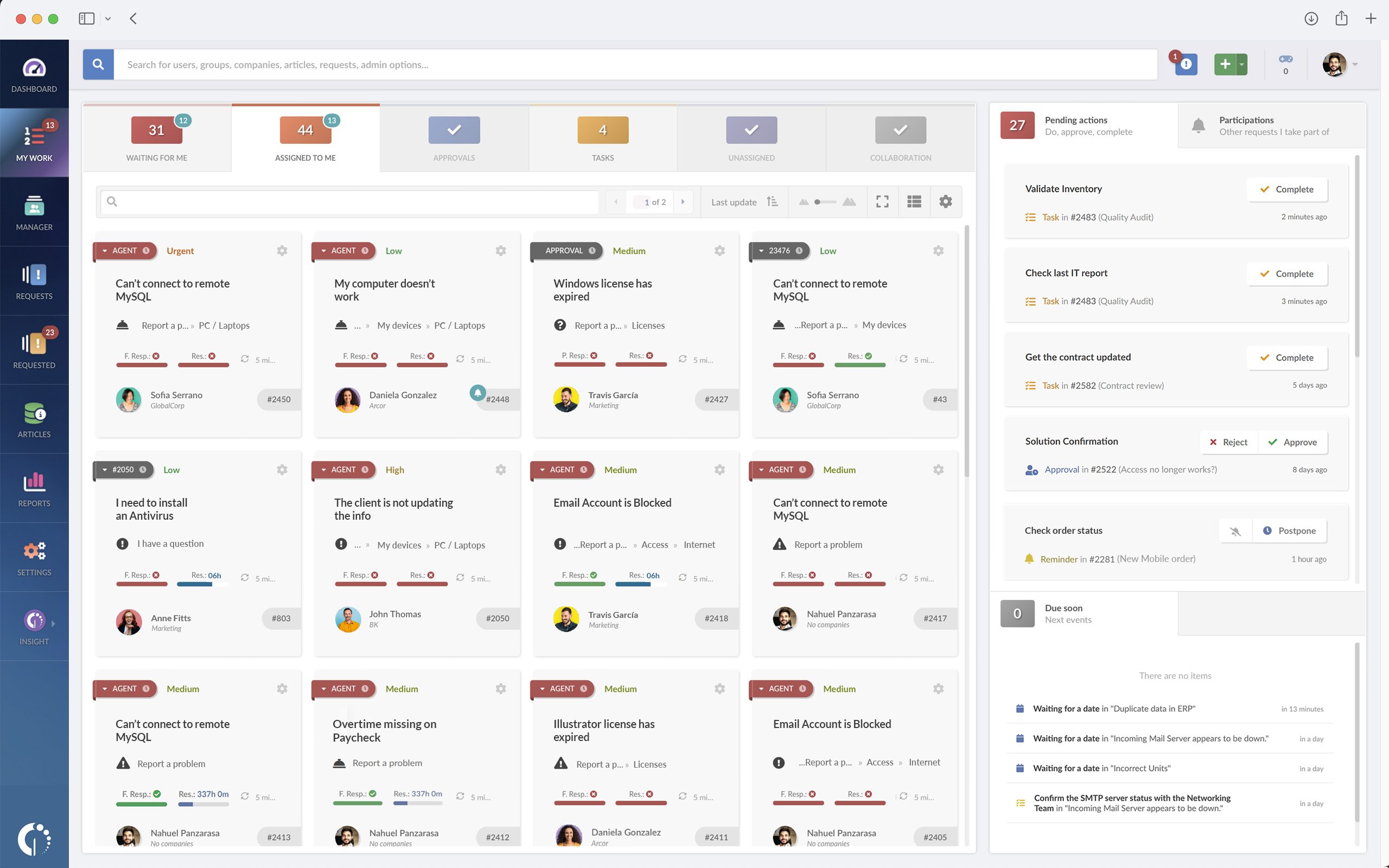
Simplified configuration and setup
InvGate Service Management simplifies configuration and setup with a user-friendly, no-code/low-code approach. This approach enables both novice and experienced users to implement the system without extensive technical expertise. The platform offers straightforward configuration options, enabling organizations to harness its powerful ITSM capabilities quickly.
Strong self-service capabilities
InvGate Service Management provides robust self-service functionalities, including a user-friendly portal, an extensive IT service catalog, and a knowledge base. These features empower end-users to independently address common issues, access various IT services, and utilize self-help resources, reducing the workload on IT staff.
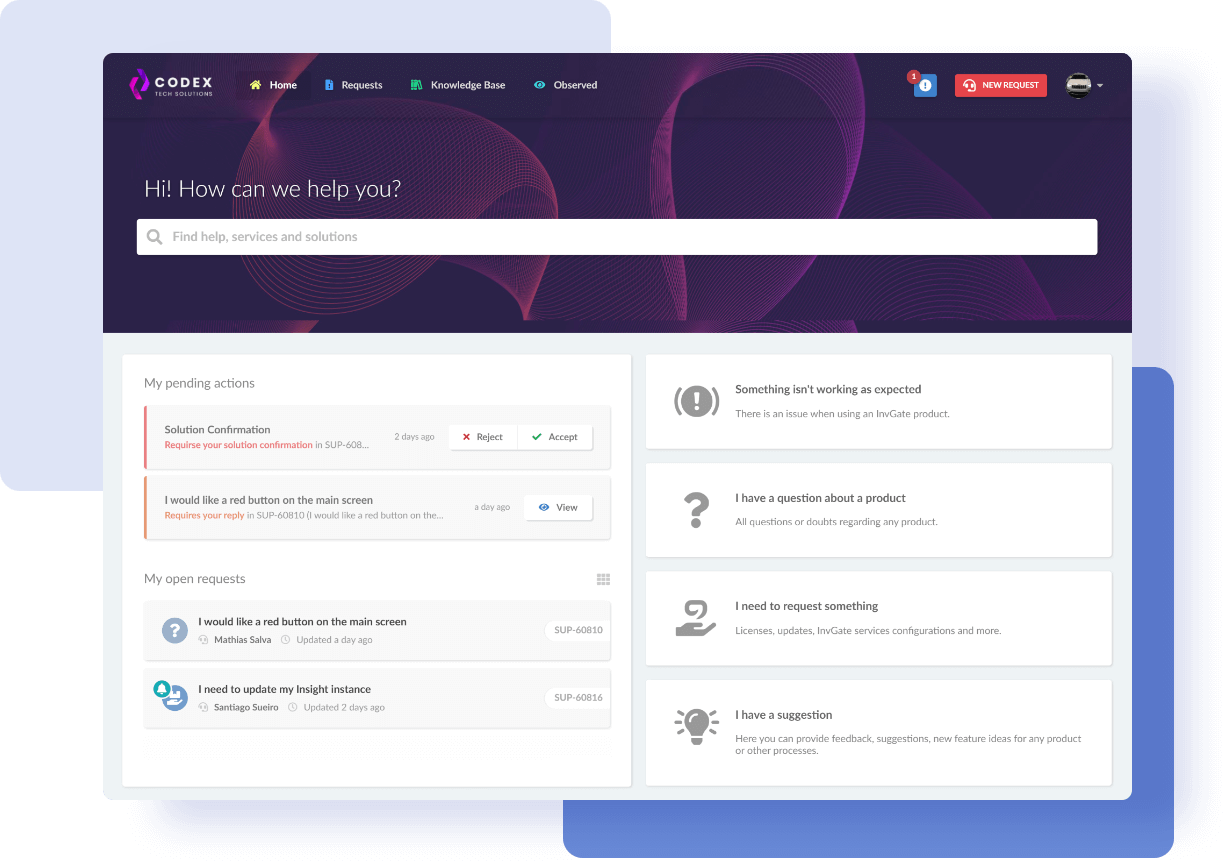
Customization and flexibility
InvGate Service Management offers flexible deployment options, allowing organizations to choose between on-premise or cloud-based solutions. This flexibility ensures that the platform can cater to the specific demands of various sectors and industries.
Comprehensive reporting and analytics
InvGate Service Management provides extensive reporting and analytics functionalities, enabling organizations to gain valuable insights into their IT operations and performance. The platform offers ready-to-use reports and customizable dashboards, allowing IT teams to analyze data, identify patterns, and make informed decisions to enhance their services.
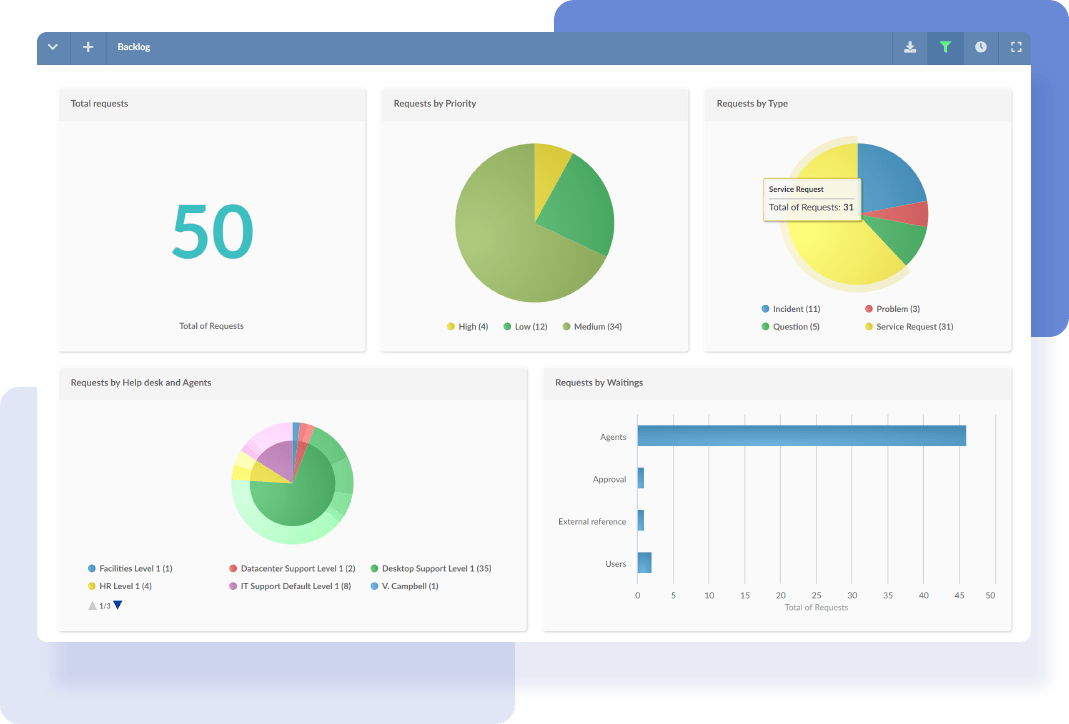
Comprehensive Asset Management
By integrating InvGate Service Management with InvGate Asset Management, organizations gain a comprehensive view of their IT ecosystem, leading to improved service delivery and reduced downtime. InvGate Asset Management includes features such as IT Asset Discovery, Inventory Management, Software License Management, and maintenance schedules.

ITIL best practice compliance
InvGate Service Management has earned the prestigious PinkVERIFIED Certified certification, underscoring its commitment to maintaining ITSM excellence. Whether organizations are embarking on their ITIL journey or managing complex operations, InvGate Service Management offers a user-friendly and feature-rich experience aligned with industry best practices.
Cost-effective solution
InvGate Service Management offers a cost-effective solution without compromising on functionality. It provides a comprehensive suite of ITSM features at a competitive price point, making it an appealing choice for organizations seeking affordability without sacrificing capabilities. When compared to alternatives like EasyVista and Microsoft System Center Service Manager, InvGate Service Management strikes a balance between cost and functionality.
Focused on ITSM with ESM extension
InvGate Service Management is purpose-built for ITSM and seamlessly extends its capabilities to Enterprise Service Management (ESM). This empowers various operational departments to improve their processes and fully embrace the advantages of digital transformation. By primarily focusing on ITSM while excelling in ESM, InvGate Service Management enables streamlined workflows and comprehensive digital transformation across all departments.
Fast ROI and ongoing innovation
InvGate Service Management ensures a rapid return on investment through efficient implementation processes. Within weeks, organizations can start enjoying the benefits of this robust ITSM solution. Furthermore, regular feature updates keep users at the forefront of technology without incurring additional costs.
Next steps
As you delve into the comparison of EasyVista vs. Microsoft System Center Service Manager, you're on the right path to finding the IT Service Management solution that suits your organization's unique requirements. Each platform has strengths, but the final decision depends on your needs and priorities.
However, it's crucial to keep in mind that the ITSM landscape offers a multitude of options. Beyond the scope of this comparison, other alternatives may align even better with your organization's goals.
One such standout choice is InvGate Service Management. This platform stands out for its streamlined functionalities, offering organizations a distinctive opportunity to meet and exceed their ITSM expectations.
Explore our live demo and experience firsthand how this solution can revolutionize your IT services. Your journey toward IT Service Management excellence begins now!
















